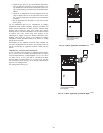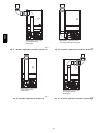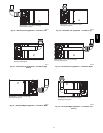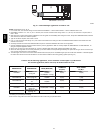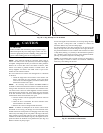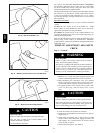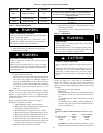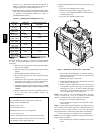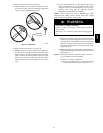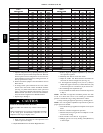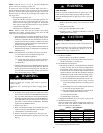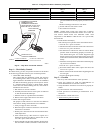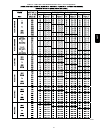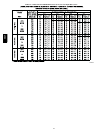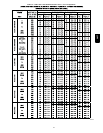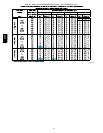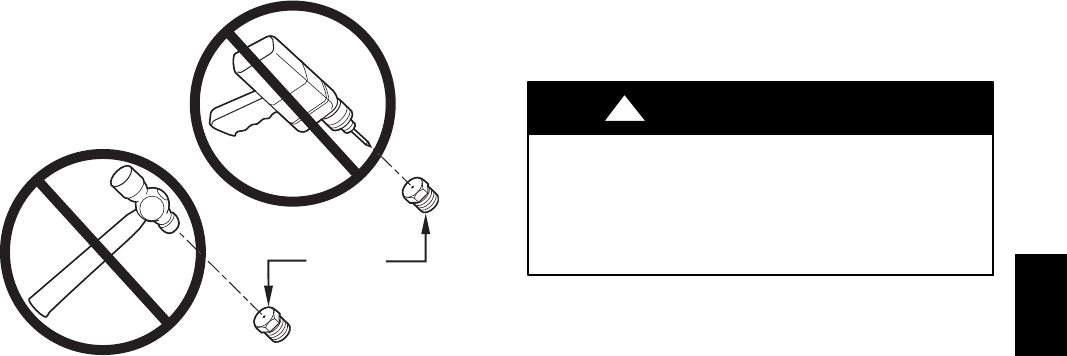
37
b. Run for 3 minutes in low--heat operation.
c. Measure time (in sec) for gas meter to complete 1 revolu-
tion and note reading. The 2 or 5 cubicfeet dial provides
a more accurate measurement of gas flow.
BURNER
ORIFICE
A93059
Fig. 54 -- Orifice Hole
d. Refer to Table 12 for cubic ft. of gas per hr.
e. Multiply gas rate cu ft. /hr by heating value (Btuh/cu ft.
) to obtain input. If clocked rate does not match required
inputfrom Step 1, increase manifold pressure to increase
input or decrease manifold pressure to decrease input.
Repeat steps b through e until correct low heat input is
achieved. Re--install low--heat regulator seal cap on gas
valve.
5. Set low--heat temperature rise. The furnace must operate
within the temperature rise ranges specified on the furnace
rating plate. Do not exceed temperature rise ranges spe-
cified on unit rating plate for high--and low--heat.
Determine the temperature rise as follows:
NOTE: Blower access door must be installed when taking
temperature rise reading. Leaving blower access door off will
result in incorrect temperature measurements.
ELECTRICAL SHOCK HAZARD
Failure to follow this warning could result in personal
injury or death.
Disconnect 115--v electrical power before changing speed
tap.
!
WARNING
a. Verify unit is running in low heat per Step 3. Place ther-
mometers in return and supply ducts as close to furnace
aspossible. Besure thermometersdo not see radiant heat
from heat exchangers. Radiant heat affects temperature
rise readings. This practice is particularly important with
straight--run ducts.
b. When thermometer readings stabilize, subtract return--air
temperaturefromsupply--airtemperatureto determineair
temperature rise.
NOTE: If the temperature rise is outside this range, first check:
(1.) Gas input for low heat operation.
(2.) Derate for altitude if applicable.
(3.) Return and supply ducts for excessive restrictions
causing static pressures greater than 0.50--in. wc.
58CT



